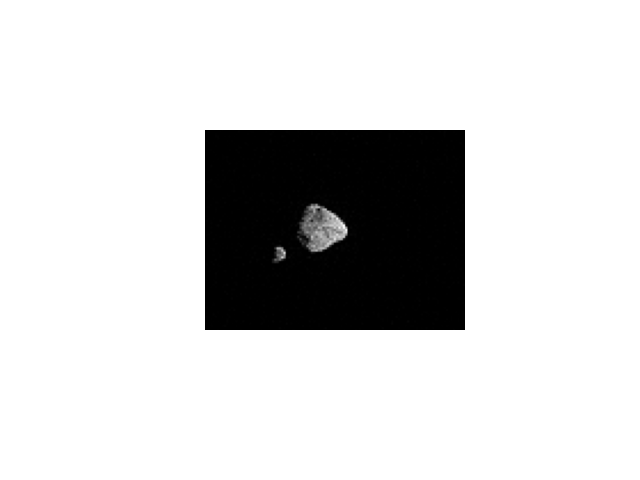Earlier this week, NASA’s Lucy mission, after travelling nearly 480 million kilometres away from our planet, was set to take pictures of what scientists believed was one asteroid—Dinkinesh. But when the spacecraft flew past the celestial body at over 16,000 kilometres per hour, scientists discovered that it was actually two celestial bodies.
As it turns out, the first asteroid that Lucy visited turned out to be its first two asteroids. What astronomers so far observed as a single asteroid turned out to be a binary pair of two space rocks. But how is that possible?
The thing is that Dinkinesh and other asteroids in the main belt are quite far away. As per NASA’s estimates, “Dinky” is about 480 million kilometres away from our planet. That is so far away that it will take light from there nearly half an hour to reach our planet. To put that into context, the light from the Sun reaches the Earth in about 8 minutes. At such a large distance, two or even three space rocks that are huddled together as close as the two Dinkinesh asteroids will appear to be a single source of (reflected) light.
But in the weeks leading up to Lucy’s encounter with Dinkinesh, teams at NASA had begun to have questions about whether Dinkinesh is a single binary system. This is because the asteroid’s brightness seemed to be changing over time. That might have been caused by the smaller asteroid coming in front of the larger and vice versa, as the binary pair orbited each other.

The Lucy mission is on a six-billion-kilometre-long journey to observe the Jupiter Trojan asteroids. The Trojans are a group of small asteroids that go around the Sun in two swarms. One swarm leads Jupiter in its orbit while another swarm trails behind the gas giant.
Speaking of gas giants and Jupiter, did you know that the giant planet could have ravaged Earth and destroyed any chance of it having life? Well, the Jupiter that we have in our solar system plays the role of a protector. Its enormous gravity field sometimes deflects comets and asteroids that would have gone straight towards Earth.
But a study published in The Astronomical Journal in October suggests that in some planetary systems, gas giants like Jupiter can kick smaller planets out of orbit and destroy their climates. According to The Debrief, that study focused on the HD 141399 system, which is approximately 121 light-years away, practically our next-door neighbour in cosmic terms. (Yes, Dinknesh is much close but 121 light-years is not all that far for two different stars in the vast emptiness of space)
That system has four gas giants that orbit far from their host star. For Stephen Kane, the author of the paper, this was important because even in our system, Jupiter and Saturn orbit far away from the star. Especially when compared to the inner planets.
After gathering data about this system, they plugged it into computer simulations made to replicate the actual planetary system. Kane found that these four gas giants were quite likely to act as “agents of chaos” that could alter the orbits of any rocky planets that happened to be within the habitable zone of the star.
The habitable zone of a star refers to the range of distance within which it is warm enough for liquid water to exist without being too warm for it to be vapourised. That is essential for life as we know it to exist.
Most Read
While that study looked at the devastating effects that four gas giants can have on a habitable planet, a second paper, also published in The Astronomical Journal, looked at the effects that a single gas giant can have on possible alien life forms and their location. For this, Kane and his colleague Tara Fetherolf looked at a system GJ 357. This one was even close—just 30 light-years away.
The researchers’ simulations once again showed that a gas giant like Jupiter could make the occurrence of life on the planet unlikely.
So, in a way, we have Jupiter to thank for life happening on Earth. And if your life is not going all that great, well, you know who to blame.







